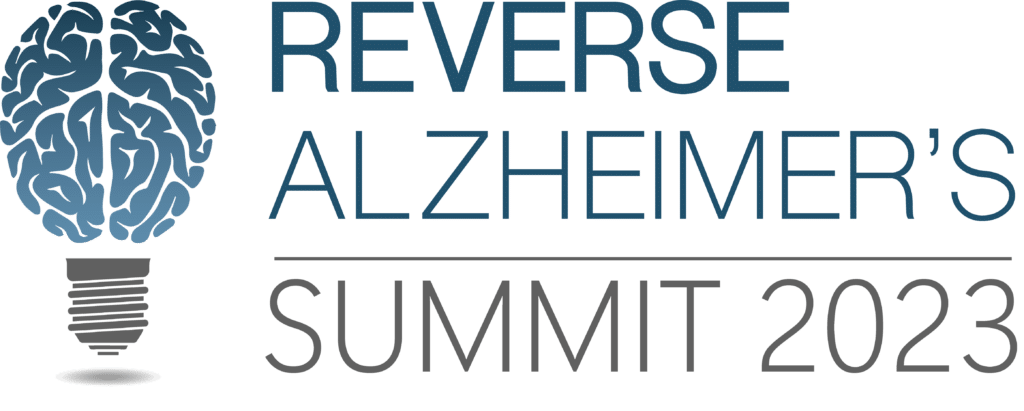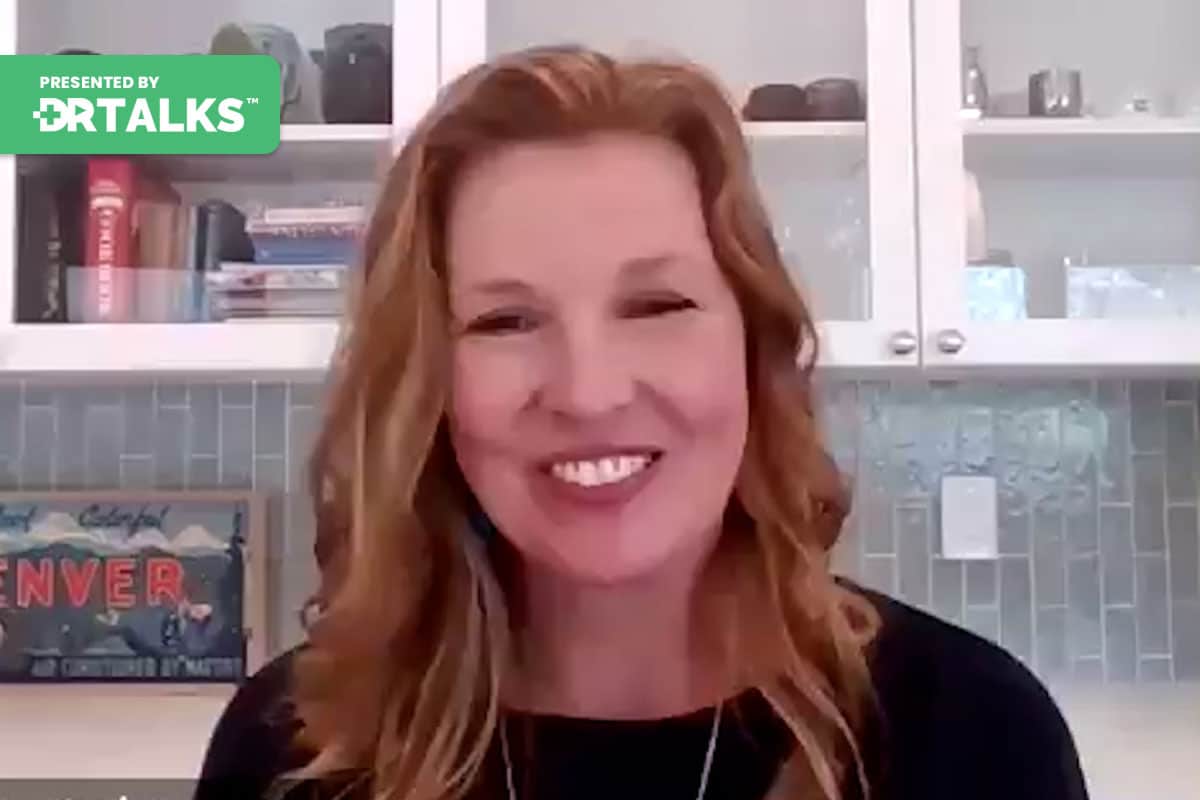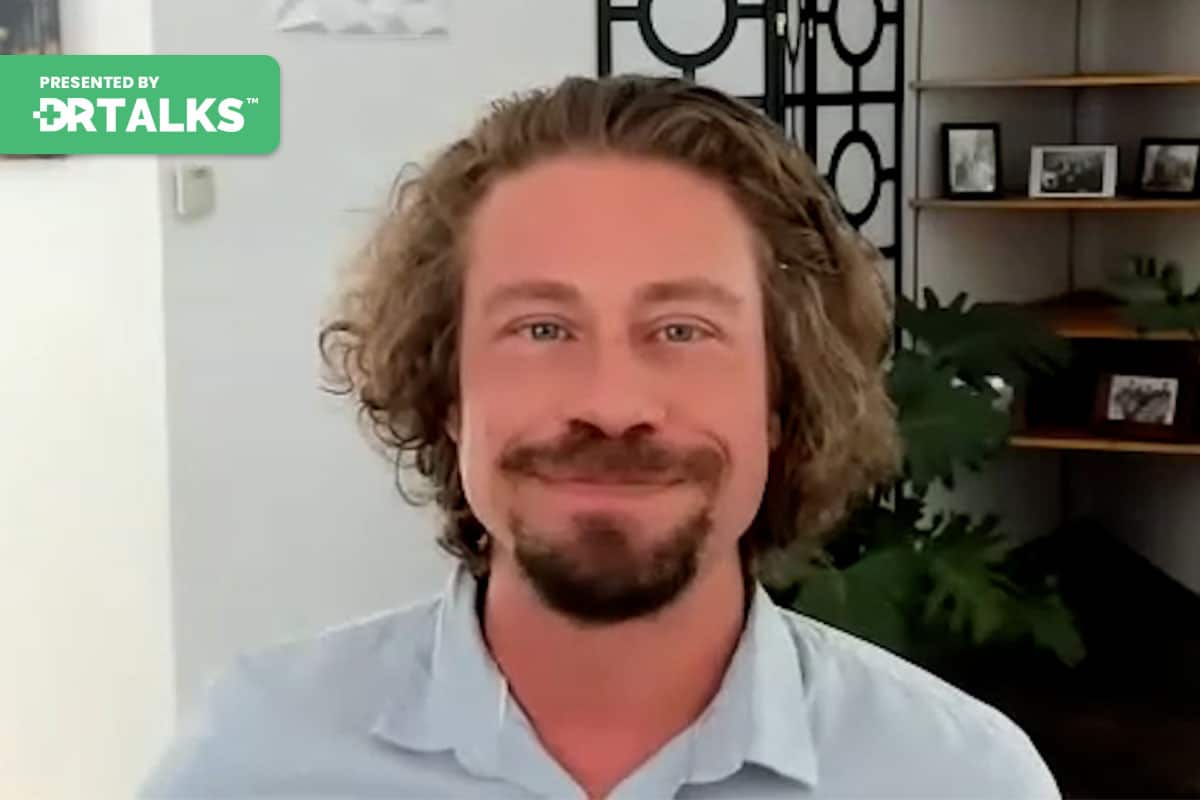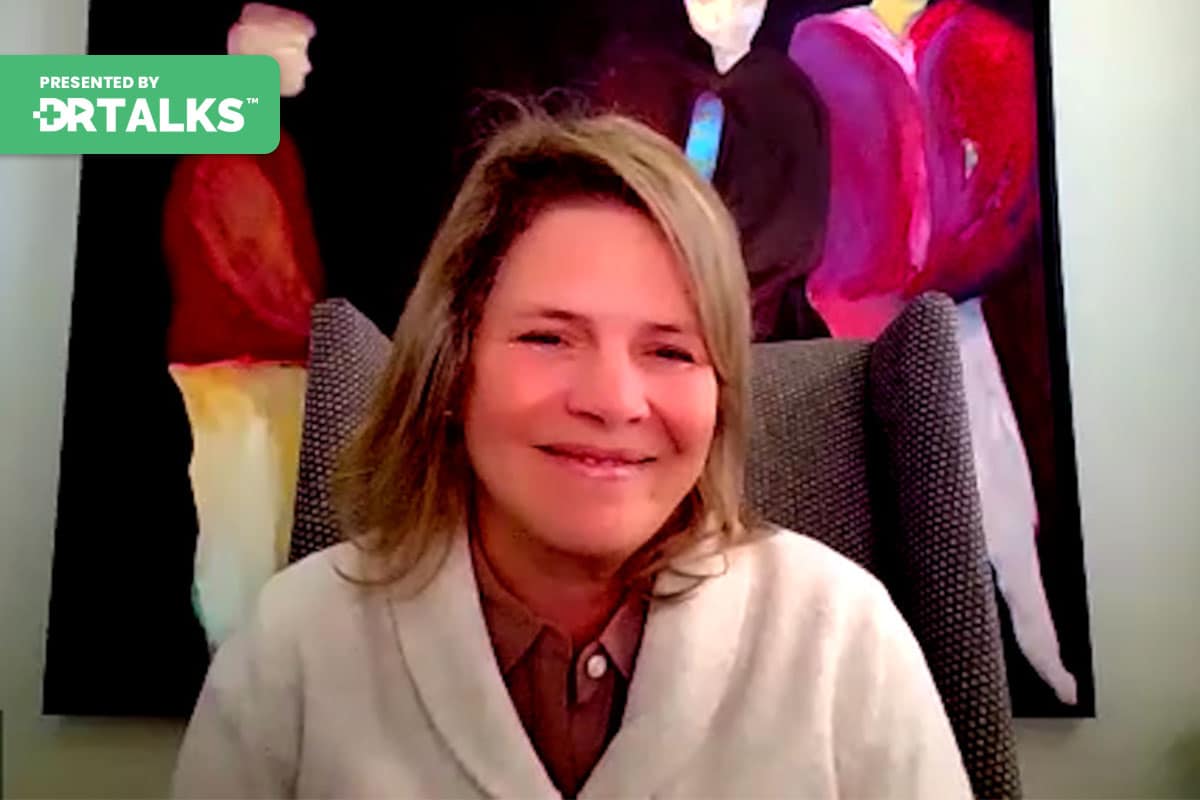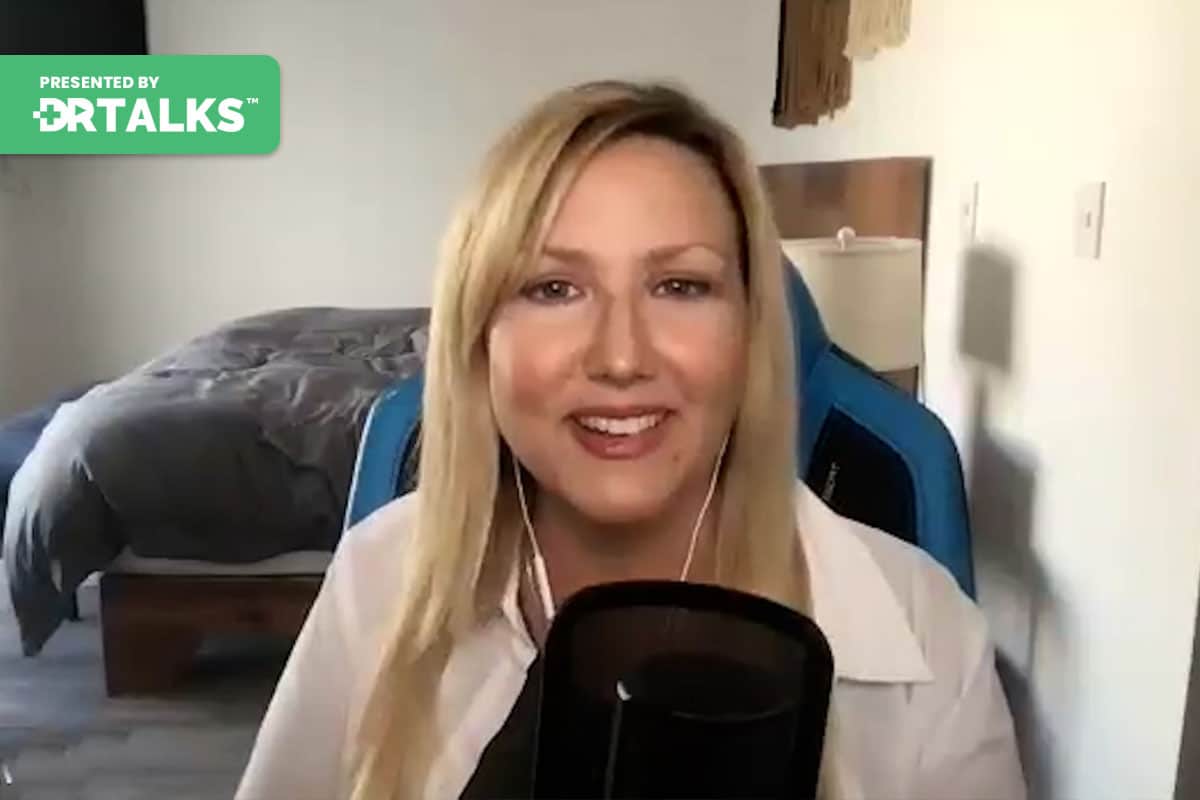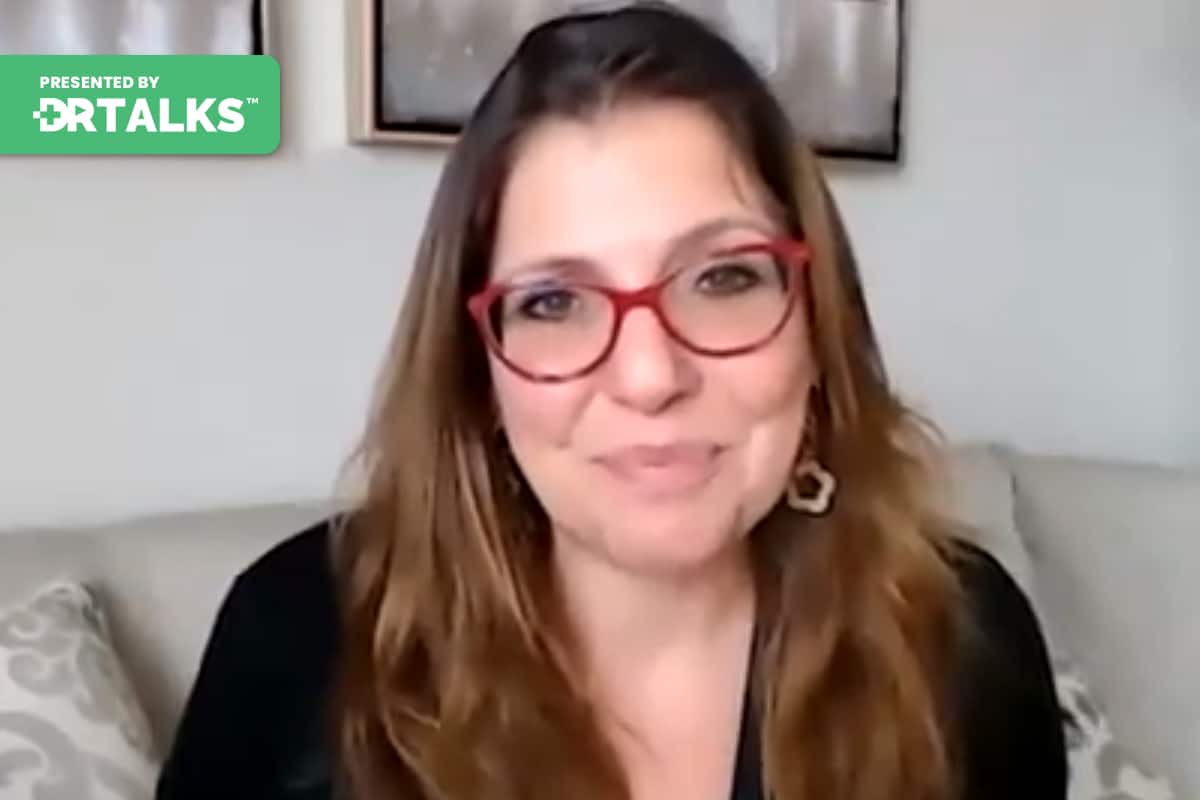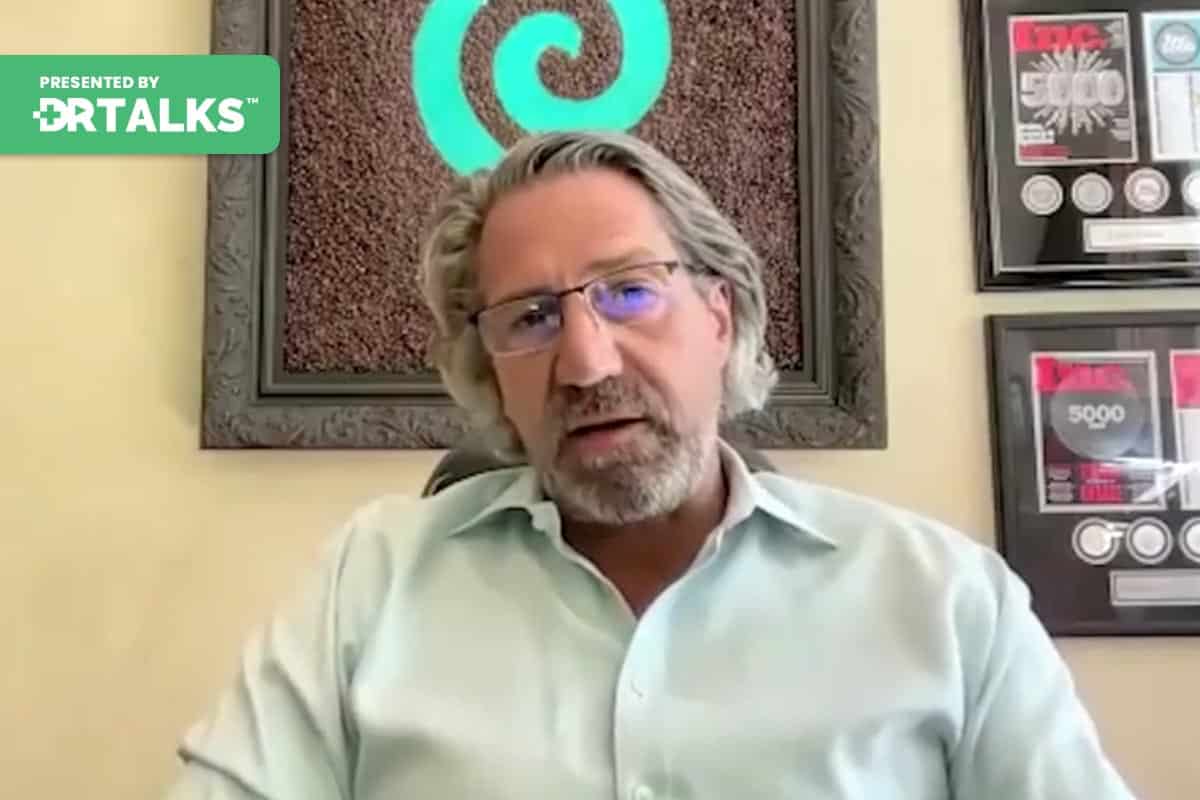Join the discussion below

Dr. Heather Sandison is the founder of Solcere Health Clinic and Marama, the first residential care facility for the elderly of its kind. At Solcere, Dr. Sandison and her team of doctors and health coaches focus primarily on supporting patients looking to optimize cognitive function, prevent mental decline, and reverse... Read More
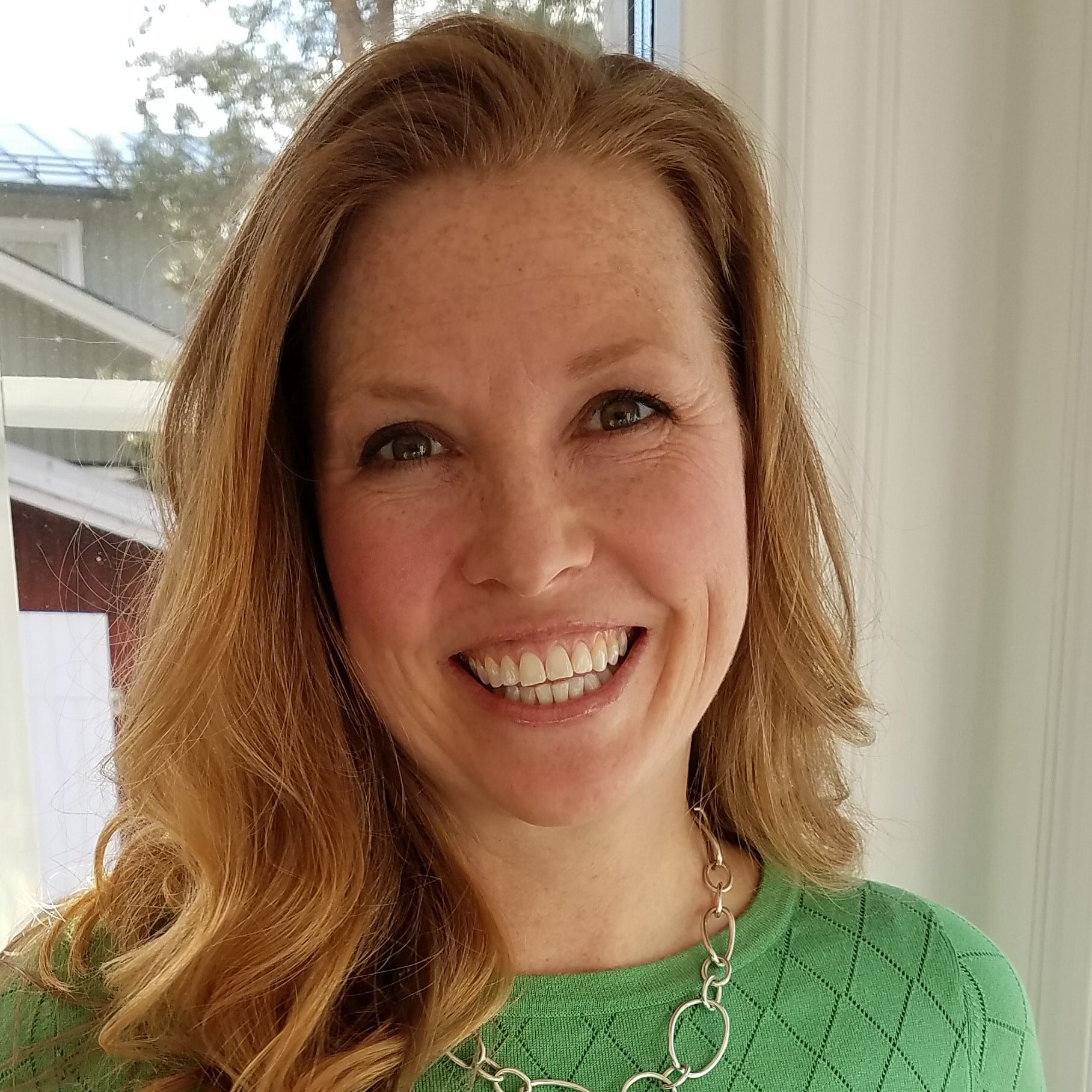
Julia Lundstrom is a neuroscience and brain health educator and the CEO and founder of Simple Smart Science. She is on a mission to decrease the number of dementia cases by 50% by 2050. In the last 10 years, she has created her 10 Pillars of Brain Health in teaching... Read More
Julia Lundstrom describes the 10 Pillars of Brain Health for improving memory
- Understand that you should start with the lowest levers to get the fastest results
- Learn how you can start at home
Heather Sandison, ND
Welcome to this episode of the Reverse Alzheimer’s Summit. I’m your host, Dr. Heather Sandison, and I’m delighted to introduce you to Julia Lundstrom. She’s the CEO and founder of Simple, Smart Science. And we have actually met before because her mom came to see me as a patient years ago. And then again, she was there to help us celebrate the opening of Miramar here in North County, San Diego. She started on this mission well before I did 11 years ago when her aunt was diagnosed with Alzheimer’s. She has a very personal connection to this awful, awful disease. She watched her aunt be unable to even remember her children. And then five years ago, her mom started to see symptoms of memory loss and now has full-blown dementia. Julia has dedicated her life to helping other families to prevent the suffering that she’s seen in her own family. And her vision is to reduce the number of dementia cases by 50 by the year 2050. And the way to do that is to help people prevent it and never have to go down this path. Julia, thank you so much for taking the time and for your support in making this summit possible.
Julia Lundstrom
Thank you, Heather. I really appreciate having me in. It’s great to see you again after so many years.
Heather Sandison, ND
I know it is so fun and it is so nice. Just to have friends and colleagues on this path with me. You know, they just feel like I’m not doing anything alone. I think Dr. Bredeson, I recorded his interview yesterday and whenever he and I chat, I’m always like, Gosh, this guy, I have been doing this like alone is screaming in the wind for so many years. And he was so lucky that I have other people that are joining me that I don’t feel alone in it because of people like you. So thank you for what you are too.
Julia Lundstrom
Think you as well. And I appreciate everybody doing it. Like it is the one thing where I don’t feel like we are competitors. We are all collaborating towards the same vision idea, this lofty vision of reducing the amount of dementia cases by 50% by the year 2050. And it really just comes from education, right? And preventative measures that we are all sharing. And so thanks to put this on.
Heather Sandison, ND
Of course, it sounds like this audacious, impossible goal, I think, to some people. And yet there are these really practical ways that we absolutely can prevent dementia, and that is the best way to do it. Now, we also see the miracles of reversal, but as you well know, it is so much harder. So do you mind if we just talk through it? I think Dr. Bredeson has his protocol. And, you know, when I do my work in the world is to make it as easy as possible by just creating places like Miramar, where you can go and have it done for you. And yet nobody wants to move into memory care. Everybody needs structure and sort of a way to organize themselves around what to do when they are faced with either the potential of dementia or actually even starting to feel it. So you have ten pillars of brain health. Can you talk us through what they are?
Julia Lundstrom
I would love to. Yeah, that is really what I have been working on the last ten or 11 years. When I started this company and I keep adding on a couple more every year. So there are actually 11. But we only until the 11th secretly the client’s program for most people. But really what we are looking at here is, is it is all it is holistic, right. And people look at that as a negative word sometimes, but it is the whole body. And so when we are looking at prevention, we like to say, especially when you start to see a little bit of brain fog, you’re just not feeling as sharp as you used to. That is the time you really need to get in there and take action, right? Because that is decades of symptoms showing up and rearing their ugly heads to where if you keep going down that path, you’re going to end up with you and in your head. Right. I’m trying to reverse that. So we like to say at this point, most people are okay to 80%, right? Like 80% is enough. And I’ll walk you through the ten pillars and what they are in effect. But it is when we get to that 80%.
Heather Sandison, ND
Does that mean doing 80.
Julia Lundstrom
80% of the work. Yeah. Sorry. Which I mean, does that for 80% of the work. Right. Whereas once you have dementia and Alzheimer’s, you have to do 100% of the work. And that I mean, it is almost impossible, right? It’s so taxing. It’s a full-time job and it is exhausting. So what we do is we teach the ten pillars and of course, it is sleep diet, right? Nutrition, brain health. So incredibly important for not only keeping you healthy but reversing some of the damaging exercises, of course, creating a lot of math in our brains, you know, getting that Miracle-Gro protein in there. But we also have things that a lot of people don’t talk about, which are, you know, your stress reduction. Right. Stress is a killer because a lot of inflammation in your brain, a lot of cortisol constantly going on. So we look at stress reduction meditation, a great way to grow your brain back, a great way to actually get into that Alpha brainwave state. Right. And that is one of the things that is actually one of the ones I’m most passionate about is meditation. We just held a retreat a couple of weeks ago and we were really focusing on getting people in the Alpha Brainwave State and we were looking at their brainwaves kind of at the beginning of the retreat and at the end. And we at 100% level, we got everybody in Alpha at the end of the week, which is really hard because we had two people there with ADHD, which means that they are mainly in Delta State. When they are in a weakened state, you know, they are in Delta, which is really hard to kind of shift that.
And through all these techniques that we trained, they were able to get into Alpha, which is really fun, and we have brain scans that show it. And, you know, we really, really go deep with that because I really think once you get those can grow brainwave states, you can grow brainwave cycles and it gets you motivated. It gets you to where you have the discipline and the calm state to actually do what you need to do with the rest of the pillars. Right. If your brain is all over the place and going crazy, you’re not going to get good sleep. You’re not going to have the motivation to eat well and work out, and you’re going to be in a really stressed-out state. So I love teaching meditation right around the whole holistic thing. And we also teach Breathwork which is another brain killer. And they say cancer can’t live in an oxygenated system. So we do the retreat. We did a really amazing it is called the Bliss Breathwork session and they basically liken it to ayahuasca without the plant medicine. And it is just this amazing awakening. People get through a lot of personal trauma with it. And so but even just as a stress reduction technique, right, just breathwork is great and of course supplementation and that we really look deep on that. We typically look at, you know, people’s baselines on their supplementation and where they are at all.
Everybody always take this or this. It’s like, well, I really don’t know until we look at your panels right. And see where you’re at on your micro macro micronutrients. So that is the seventh one. And then social right is a huge one. And especially coming out of COVID, like, I mean, I think that statistic is there were 26% more Alzheimer’s cases through COVID. And I truly believe it is because of the fear and the isolation. Right. And I talk to clients every day that are still like upstate New York is still isolated and you can’t get into the nursing home there. And it is just really hard on people. You know, there’s that 85 year Harvard study done on men that showed that having a good network, a good family, you know, family, good, strong connections with people was almost twice as important as food and exercise combined for living a very healthy life. Right. So we work with people on that. We get them inspired to go out and be social and be around their friends and help them with that. And then we always say, you know, use it or lose it. I think our cell phones or my those, but it is one of the most damaging things to our memories that we have ever created because we don’t we literally don’t have to remember anymore. Right. I mean, 100% of everything goes on our phone, right? You can probably still remember your childhood phone number, right?
Heather Sandison, ND
I do. Yeah. That. But you’re right. We’d map everything. So even our spatial understanding of where we are when we look at our phones to figure out where we are going instead of looking up to determine like do we turn left or right and then also remembering those cues of landmarks and things like that. And spatial spatial memory is a big part of our memory. And I kind of wonder if that part of our brain is shrinking.
Julia Lundstrom
I think if they were to do studies on the different and maybe Dr. Ethan can do this because he has so many stack images, you know, but like before and after the advent of cell phones on the size of our hippocampus and the size of, you know, our prefrontal cortex, just in general.
Heather Sandison, ND
Because we don’t number anything, right? Yeah, it is certainly changing. We have to remember different things, I suppose, right? Yeah.
Julia Lundstrom
So we like to do memory classes where we teach people how to better use their memories and to use their memories in general. But then mnemonics, you know, having them remember their grocery list and just practicing using their memory, remembering names, which I don’t believe is a born skill set. Right. That is always the first thing we hear. I always forget names like evolutionarily wise, it makes more sense for us to not remember somebodies name, right? The first. Second we look at somebody, we are thinking friend or foe, where they going to kill us? Right. And that is always when we say the name. So our amygdala is are taken over like there’s no way we are going to remember somebody’s name. So we just teach ways for people to get better at using their memories. Right. And then our last killer is one that kind of does a dual purpose. And it is and it is its purpose, right? It’s challenging yourself, learning something new and having purpose in your life. And that is one that honestly, when we when we talk to retirees, it it gets them in tears because the first 35 years of your life, your learning curve is straight up and down, and then it starts to kind of let you know you’re married, you have kids, you get really good and comfortable in your career and you stop learning. And then by retirement, it goes flat and even negative and that is when our brains start to atrophy, right?
Like we really have to work on keeping it challenged and learning new things and really having purpose. I was telling my clients, you know, there are two days in your life where you are most likely to have the highest probability of death, and it is the day you’re born and the day you retire. And so the Japanese don’t even have a word for retirement. They call it a change in purpose. Oh, well, and I love that. I love that because people don’t I mean, I talk to people every single day. They don’t have purpose anymore. I know my dad, bless his soul, when he was alive in front of the computer for 12 hours, like playing solitaire, answering surveys, you know, when he first retired, he was picking up the military from the airport and driving him to another city or taking them home like he really had purpose. And he kind of gave that up. And I really saw a decline in his mental state when that happened. So I really think that there’s this when we are saying the Templars are being help, when we are looking at the overall health and I’ll tell you, the 11th one was sex. We got to keep our sex organs. It’s all part of our body, right? I love it. I went with it. Yeah. Yeah. So it is we got to keep everything active. We have got to keep it alive. It’s all energy centers in our body that are connected. Yeah. All right, so those are the ten pillars, and we really find out which with most of our clients, we do memory assessments and find out which of the the ten pillars they are needing the most help and that we can get that highest lever now.
Heather Sandison, ND
Yeah, let’s go. So tell us, because I think anyone listening to this stuff, it to our conversation is potentially feeling a little overwhelmed by all those things. Like I have to do all those things, I have to do eight of those things. Where do I start and how do you determine when you work with a client where to start?
Julia Lundstrom
It really comes down to what’s the biggest lever. So when we are talking to people, you know, obviously it is like the other day that was on, he lost £80, but he did it eating grits and Fritos for every meal because it was low calorie. Okay. That does not. So obviously, I think food, sleep, nutrition, sleep and exercise are pretty much my first ones, unless they are super stressed out. And then we got to work on some anti stress things. We got to get the cortisol levels down and test for inflammation, things like that, and get inflammation down. So it really depends. Know everybody’s so different. We also like to put everybody on continuous glucose monitors to start because if you look at, you know, they refer to there’s a type of dementia they refer to as type three diabetes. And it is from a lack of insulin response. And one of the most shocking things to me, it was so interesting, Heather, at our retreat, we had eight people that were all living together doing the exact same thing every single day, every one of them wearing a CGM, a continuous glucose monitor. And it was shocking to see how different everybody responded to the exact same foods, doing the exact same activities for a week. Right. And now I look at dietitians and nutritionists and say, like, if you recommend diets without actually looking at how it is affecting people individually, like you’re doing them at this, right? Like they really need to know how individual foods affect them. Yeah, that is.
Heather Sandison, ND
Great. Having a CGM was the most educational thing. Like I have maybe ever done about my own health. Like it is just so eye opening. And I think a lot of people get confused, like, how come there’s so much conflicting dietary advice out there? And this is why it is because the experts are saying the right thing. It just depends if you’re the right person for them to be talking to you. Right. And we recommend the ketogenic diet. And I think that metabolic flexibility is really important. So switching up your diet, sometimes a benefit does not come from the diet itself, but it comes from the change in your metabolism in response to a change in diet and using something like a CGM, a continuous glucose monitor. It’s just such a practical. It’s fascinating, interesting, wonderful.
Julia Lundstrom
It is a.
Heather Sandison, ND
Way to get information.
Julia Lundstrom
What was the biggest revelation you had from it?
Heather Sandison, ND
So I had this matcha. I was drinking every morning and it had like an adaptogenic blend and it was spiking my blood sugar. I had no idea every morning and my blood sugar was going up and I was like, Oh, this is like just herbs and matcha powder. But apparently and it is not even listed. There’s no sugar listed on it. I don’t know what it is. Something in there is raising my blood sugar so I could have a hand. Like what fits in the palm of my hand. I could have, you know, maybe less than ten blueberries and not raise my blood sugar. But if I had the same amount of raspberries, my blood sugar went through the roof. But on the fun end, I realized that I could drink a kombucha just slowly with 14 grams of sugar, and I can drink it slowly over like an hour and a half and stay in ketosis.
Julia Lundstrom
Good, good. There’s a great book called The Glucose Revolution that gives some really great hacks. And so if you exercise afterwards after any meal, it reduces your glycemic response by up to 75%, which is huge. Oh, right. So if you have that cheat day or that great meal, like you just go for a 15 minute walk or whatever, right? So there’s some great hacks in that that we know that you.
Heather Sandison, ND
Did you noticed anything for you or for it was.
Julia Lundstrom
One of the best things I have ever done for my health. Yeah. Yeah, it is I went through a really stressful period last year where I tell you how many times I saw 2:14 a.m. on the clock because I’d fall asleep and I’d wake up and I couldn’t get back to sleep for hours, like hours and hours. So, like 6:00 in the morning. And what I found out is I was actually hypoglycemic at night, especially with the stress, because stress affects your blood sugar. It’s not just food, it is sleep, diet, exercise, stress. So I was the watcher. I was hungry. My body was waking me up saying, hey, go eat. So I actually switched and I still do it to today. You know, they always say don’t eat a couple of hours before bed. I actually have to have like having a handful of nuts with like a little square of dark chocolate or something, like a baby. And it was the change I made that night. Like that night once I found out after a couple of days, you’re hypoglycemic. It’s like, okay. And that changed immediately.
Heather Sandison, ND
Wow. And so these all of these pillars are related. But that was something that you found out about your blood sugar and your metabolism that was affecting your sleep. And when you have solved the metabolic equation, your sleep gets better, which now you wake up more rested. So now you actually eat better and now you get the exercise. And now you feel like you’re not exhausted. So you engage with your husband and get that 11th pillar taking issue.
Julia Lundstrom
And then I wake up early and meditate, right? Like, whereas before I would I was having to sleep and I was always late cause I was so tired. And now I have that meditation done, and I am a much better version of myself every single day and make much better decisions, much higher executive function. When I get that meditation in the morning, when I get.
Heather Sandison, ND
This time a second.
Julia Lundstrom
I’m asleep, Nancy. But you know, the sleep and the meditation, and then I have the healthy breakfast. That was another thing I saw. I was intermittent fasting for about two years and I was not eating to about 11:00 in the morning. Well, that was completely spiking me and then I’d come crashing down. But if I had that same meal at 8 a.m., it was just a perfect rolling hill, you know? Perfect. So intermittent fasting for me. Not a good thing, right? But for others, it is a great thing. And I know we like to teach intermittent fasting for brain health, but, you know, you just it really just depends. I’ll still do five day fasts and like Dr. Longo’s five day prolonged fast and things like that. But I really it just on a general basis, I learned that that is my husband. Great. He’s a great pastor. Yeah. So it is so individual. And I think that one of the biggest things we learn in working with clients and people is that it is just so individual. So I don’t even like giving general advice anymore because we really have to get in there and dove into not only what your lifestyle is today, but what has that been your whole life?
Heather Sandison, ND
Yeah. And that technology like using the technology of a continuous glucose monitor, it is just it is such a luxury and so fantastic that that is available these days. Talk to me about some of the psychology of these pillars. I know for you personally. I mean, it is so fun when you can be like, this is my personal experience. I just want to share it with you so that you can feel better. You can get the most out of your life, but to take me through some of the stories of like your clients and how they have experienced this.
Julia Lundstrom
Yeah, you know, I mean, I can talk to the health and diet side benefit. I mean, we always get people that come in and I have a whole staff of certified memory and cognition coaches, and so they are the ones who really work the clients and you know, we get this side benefit of I have been trying to lose weight my whole life and I just started this keto diet and I started sleeping well and all of a sudden without even trying, I lost 30 pounds, you know. So there’s some fun side benefits to that. But really the most potent stories for me are really the stories of people who get their life back right. Like we had one woman that hadn’t written in two years. She was a writer alive, and it is just because she didn’t feel organized and she didn’t have the confidence to do it anymore. We got her back to writing, right? Like just doing these things. She got the confidence to get back to writing and we have women and men, of course, that the purpose thing for me is, I think the biggest one, because that is where I mean, that is where when I first start talking to people, that is where they fall into tears because they are miserable, they are unhappy, they are bored. Their sleep schedules are off because they have zero reason to get up in the morning and they become night owls because they are just staying on, you know, all night looking at Facebook or on YouTube or whatever.
And it is just totally unproductive time. Our brains want a job. They want something to do, so it is those people that go back out. I talked to a woman the other day that went through one of our programs and she’s like, I’m out there, I’m holding babies now, you know? That was what I wanted to do. I was so sad when my kids start having kids, grandkids, because I love those babies. And so she we got her inspired to go out and do that again, which honestly got her sleep schedule back on because she had to be there at 9:00 in the morning. I gave her a reason to get out of bed on time. Yeah, she had something to look forward to and keep keep that hope alive that we want that that future. We don’t want a future of dreaming about sitting behind a computer all night, like, feeling miserable every day. And I hear that more often than not, people are just empty inside. And so I love giving them not only that hope back and that purpose, but the tools to get there. They.
Heather Sandison, ND
Right. So what do you recommend that people try first at home?
Julia Lundstrom
So I think if they are going to do it, it comes with a basic education. I know watching this summit, they should really watch the summit and see what really rings true for them. If it is diet, if it is exercise, if it is the social component, you know, looking at the ten pillars find what they are lacking because most people know they’ll tell you, right? They’ll be like, oh, my diets that I know I’m not doing what I supposed to do, but I can’t get motivated to do it. But they should really watch the summit. We have a great we have a couple of great workshops we put on as well that are just educational that talk through some of the things you can try to to start making these changes. And I know so many of the people on this summit are going to be talking about how to start making these changes. So, you know, sleep is bad for you, right? If you’re really bad at sleep, we always say sleep. A good night’s sleep starts in the morning. Right. So go out, get some vitamin D first thing in the morning or if it is cold and snowy, sit in the window to get that sunshine, to reset your melatonin levels, to reset the levels, and to get your circadian rhythm back on track. Right. And, you know, don’t try to view falling asleep at 3:00 in the morning. Don’t try to go to bed at midnight. Not going to work. You want to just take 15 minute increments at a time, right? So four or five days, go to bed at 245 and then 234 and it is going to take some time. And I think that is what most people, you know, they always want a quick fix, right? They want that power. And I know Dr. Brunson talks about the 36 reasons for memory loss, and there’s just no pill that is going to fix all of those. But going out, getting a good night’s sleep, going and laughing with your friends, laughing. Oh, what a great.
But I. I don’t even watch scary movies anymore or anything like that. I always watch comedies. There was a study done on diabetics that they took half the group and they both had the same meal. Half the group went and watched a comedy and half a group went and watched The Scary Movie. And afterwards the group that watched the comedy and laughs did not need insulin, whereas the other group did well. And it is the power of laughter. What affects your glucose, right? Affects your insulin response like so go do things that are going to make you feel good. And I know that is hard when you’re sad, depressed or lonely or not happy, you want to do things that are going to make you feel bad, right? You want to sit on the couch watching TV all night, need chips, but that is when it is time to double down and really get on the path to help. And if it is just one thing, right, if it is just going to your mailbox and back because you never go outside and get vitamin D or you never go for a walk or you can’t walk or whatever, it is just taking those first steps. So I think it is really important to just look at the ten pillars, figure out where you’re kind of missing it, you know, and where you want to start. Because you and I both know it is lifestyle habits right there for life. So if there’s something you don’t like, you’re not going to do it for life. And that is where the good part about the 80% comes in because you don’t have to do it right now. Yes, we all do need to get movement. We all do need to eat well and we know there are some things, but you don’t need to eat perfect.
Heather Sandison, ND
Right? Right, right.
Julia Lundstrom
You can go and snack.
Heather Sandison, ND
It’s a favorite all the time and forgive me, it is a bit of you listeners who have heard this already, but it is the decisions we make every day that have that ability to shift the trajectory of our health over the long term, significantly. So it is what we eat, what time we go to bed, what time we wake up, how much movement we get during the day. Those things, there’s no pill that is ever going to get us the results of making those different decisions, even that they are just slightly different. Right, which I often will recommend. We just start with one meal. What’s the meal where you can get the most leverage, where you pulled the biggest lever because it is the one that is like kind of falling off the rails the most or what’s the one that is like.
Julia Lundstrom
A closest to being great?
Heather Sandison, ND
Closest to being great? And then what small change can you make? Because sometimes people are like really ready to go and other times you are like a little cautious and but they can make a small change, like just stopping, having toast with breakfast sometimes that is it. And then all of a sudden you notice like, Oh, my sugar isn’t crashing. And now I have more energy in the afternoons or even the rest of the morning. I’m not as bloated as I feel more comfortable, and those small tweaks can sometimes make a massive difference. And then we can kind of double down on those gains. We can use that extra energy, that extra comfort to make even better decisions the rest of the day.
Julia Lundstrom
Yeah, what we see with the CGM going back to that right with your toast that the breakfast actually says, I mean they say yeah, they used to say breakfast is the most important meal of the day. And then it went to, Oh no, you don’t need to eat breakfast. You can do intermittent fasting now. But what they find is that the first meal of the day really sets you up for success. The rest of the day, you eat a really low glycemic response breakfast or whatever time. If you’re intermittent fasting, then the other meals that might have spiked you higher will actually stay lower and give you those nice round curves that you want. So it goes back to again. Breakfast is the most important, but little. I like that. Little things cutting out the toasted cereal. I always cringe when people eat cereal for breakfast, right?
Heather Sandison, ND
Oh, my God. Orange juice and orange juice.
Julia Lundstrom
Did you use to drink gorgeous?
Heather Sandison, ND
Never. I mean, if we like juice in the tree, maybe, but like. No, like that.
Julia Lundstrom
No, we grew up with orange juice. I mean, that was what we thought it was healthy. Right. And the we drink the one with the pulp because that was supposed to be healthier because you got a little bit of fiber. I don’t think I, I don’t think I drink it after 18, but I remember like the drink to it is healthy, you know, it is basically like having a candy bar for breakfast, so.
Heather Sandison, ND
Wales Yeah, no, we drank milk. It was like milk for dinner every night and it was not organic. It was, you know, it was God knows, but that dairy I think was also milk. It’s basically just galactose. And glucose is what makes a lactose molecule. So it is half sugar and I think a lot of especially skim milk, it is just sugar water. So there are these things and you know, we can laugh about what we thought was healthy in the nineties. And part of me goes, What are we thinking? I think it is.
Julia Lundstrom
Good years.
Heather Sandison, ND
From now, like, are we going to totally change our minds? And I think there’s this again, like my opinion is that there’s not one rate diet. It’s really about changing your diet, getting that feedback, whether it is through the CGM or your system, your system, telling you how you feel, your symptoms that those figuring out what’s right for you, that is the most important thing. And it might not be the same in every season of your life or every season of the year. You might crave different things in the spring than in the fall. What was consistent about ancestral diets was inconsistency, right? So we were meant to change it up and then see how our bodies respond. And so I love your whole message about doing that and using the CGM especially is so profound.
Julia Lundstrom
Yeah. And it really comes, you know, it is so great now with so much optimal individual health care. But I think we are really blessed in the United States for that because we talk to people all over the world. And, you know, my husband being from Sweden, they don’t have any others. They are right. If your doctor does not prescribe it, you literally can’t get it. And so I think we are really, you know, say what you will about our medical system.
And, yes, it is broken and it is a sick care system. But at least we have ways to optimize our own health. Right. We can take at-home tests now for a lot of the stuff I took, you know, getting to be that age. So took some hormone test at home last year and really found out, yeah, my estrogen and progesterone levels are way off. So it is really nice that we can do this optimal testing at home and, you know, it is a bigger thing. Of course, you always have to go to a doctor. It’s much better to get those tests anyway. But you can start the process.
Heather Sandison, ND
Yeah, you know.
Julia Lundstrom
Okay, I suspect I’d be inflammation. Let me just do an at-home inflammation test right now. I can go to my doctor, have him do a more professional one, and tell me what I need to do. Right. Functional medicine, especially.
Heather Sandison, ND
Yeah. Yeah. This collaboration that like taking back responsibility for our health rather than projecting that the doctor is the expert, I’m going to do exactly what they say. But more having this a collaborative experience with them and understanding your body, using any sort of health issue as this invitation to like under like we did with the cream. What can I learn? What can I explore? What can I understand better so that I can optimize my process of aging and do it gracefully? It’s really this just an incredible invitation, and.
Julia Lundstrom
I think it is really important for the older generations to share that. Now, we typically work with people that are 55, 65 plus, and they still take what their doctor says is God. And what happens is, is they go into their doctor and their doctor says, you’re starting to show signs of memory loss and you have some normal age-related brain shrinkage. And sorry, there’s nothing we can do or we can put you on this pill that works for 30% of the people for six months. And that is it. Or you don’t know the new one that causes brain bleeds and 20% of the people right. So that is it. Right. And they just send you on your way and see and see in six months. So I think it is really it is an important message to get out there that there’s so much more you can do. Right. And you can take the power back yourselves and work with people like yourself or with us or any of the other participants of this summit and really regain that power and know that you can get to optimal health no matter your age. I mean, we work with people in their eighties and nineties and it is like, why not? I’m not going to give you 15, 20 more years on your life. But if I can give you the happiest, healthiest life today, right? My aunt, my another auntie have, you know, 95 still playing golf three times a week. Like, what do you want that? What do you want to keep that? So it is keeping what you have. It does not matter your age on getting started, but it is also knowing that your doctor does not know everything and that you do have to get out there and listen to other people like yourself. Right.
Heather Sandison, ND
So exciting. There’s so much hope. So I want to make sure everyone understands how to learn more about simple science and what you guys offer, what you do, how it works.
Julia Lundstrom
Absolutely. So the best way is always just to go watch one of my workshops. If you go to our website symposium, our sites dot com and I think we have a link we are going to put here, you can sign up for one of our workshops and they are all educational workshops on sleep. How to Boost Your Memory in 30 days. We have another one on a guide to Alzheimer’s prevention, and you start to learn. And really that is when you get in our network. And then for people that really want to go cheat, we do have our memory guru programs where we look at the ten pillars of brain health. We do a detailed brain assessment. We put you on a CGM order. Any other tests that we need to order, work with your doctors, do it in collaboration. And that is a much deeper program that we do work with people. We create what we call the brain health roadmap, which is your personalized plan to get you from this, you know, forgetting words, low recall, brain fog to feeling sharp again. And so all of that you can access on our website and find out more and talk to us. And then that is just the best way. And we have a lot of education out there. I’m a full believer in education first. So I always lead by teaching. And we have a great YouTube channel. It’s just I’m always out there talking about this because I really think the more we talk about it, the more I’m going to reach that vision, that vision, right? The more we can educate people, the more they realize that it does not have to be normal and that there’s something they can do about it.
Heather Sandison, ND
And hashtag, I’m just so inspired by you and delighted that you’re here with us and that our audience is getting a chance to meet you and learn about all of these options and all of the support that is out there. Julie, thank you for the work that you’re doing. And you know, I wish you and your family the best in terms of supporting the people that you were personally close to who are suffering with this disease.
Julia Lundstrom
Thank you, Heather. I appreciate that. I wish my mom was when she came to see you and we did all the blood tests. You know, she was at a 19 on the MOCA score. I think you even took the test. And in a couple of months through the recorded program, we got her two over 22. So she was really succeeding. But then she’s not someone who takes care of herself. So fast forward quite a few years and now we are looking at memory care right now. So it is tough. But this is where, you know, I was sitting there holding her hand the other night. She slept in my brother’s guestroom and she has slept there a million times. And she was so scared because she didn’t know where she was and the only thing she knew was me. And she was holding on to my hand and it choked up, but it really cemented like, we have to teach this stuff, we have to get people doing this stuff and taking care of themselves and taking ownership so that we don’t more people that go down this path because I love her to death, but she just does not take care of herself. And we need people to know how important this is and how they don’t have to have this genetic expression turned on at birth. Right?
Heather Sandison, ND
Yeah. So we can delay. We can prevent it. We can avoid that. It does take work and willingness to do it. And a big part of it, I think, is just changing the narrative. Like what you and I are doing right is telling people this is possible, sharing the stories of success and even your mom’s story. Although right now it is so challenging and she’s declining, she proves what’s possible. You know, she was in a position where she was able to follow through and continue getting the benefits, and not everybody will be. It isn’t for everyone. It is for people who are willing to do the work and willing to commit to the process. But no one should be told that there’s nothing you can do or we don’t know why it is happening. That is just factually inaccurate. And there is so much that you can do and there is support out there so that you can do this at home. There is support for trauma. If it is too much to try to do at home, we can. There are immersive experiences in both San Diego and Wichita, Kansas. There are options for you there, apprentice and train providers all over the world. So get that help that you need to get this started if you have any interest, it is so worth it. You can get your life back.
Julia Lundstrom
You absolutely can. So thank you for the work that you’re doing. Heather And putting this on. I’m very grateful to have been here and I hope that my ten pillars 11 will help somebody just get started. Just pick one and go for it and pick something as you said, something small today they can do. So thank you so much for having me.
Heather Sandison, ND
Thank you, Julia. Looking forward to seeing you soon.
Julia Lundstrom
Thank you.
Downloads
